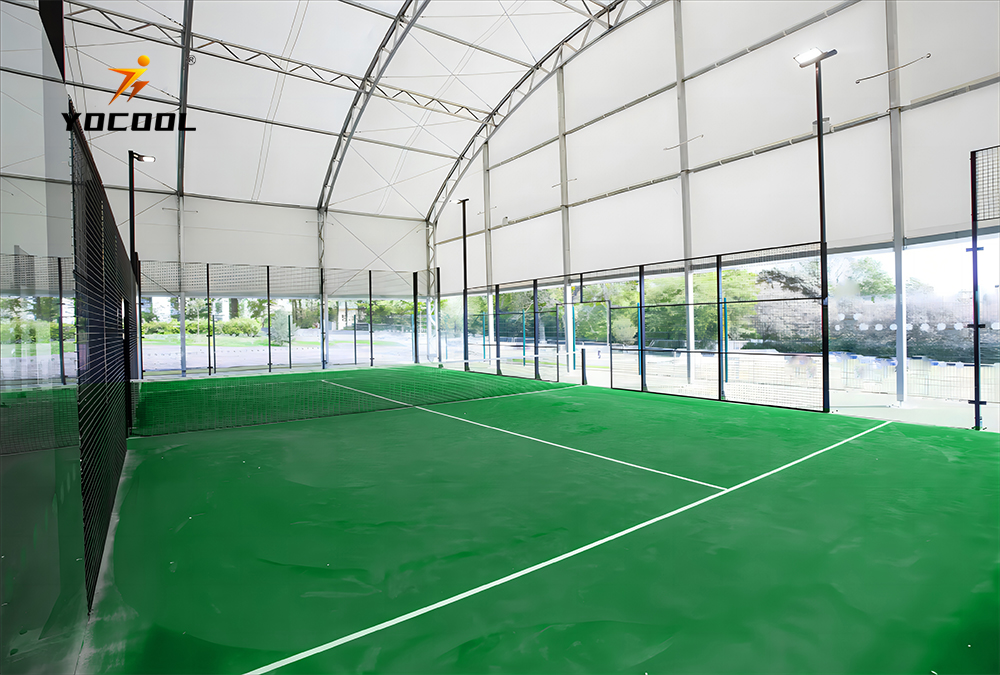

Understanding the Costs of Padel Tennis Court Construction A Guide for Suppliers
Padel tennis, a racquet sport combining elements of tennis and squash, has been rapidly gaining popularity around the world. As its fan base has grown, so has the demand for suitable facilities—specifically, padel tennis courts. For suppliers and contractors looking to break into this niche market, understanding the costs associated with constructing a padel tennis court is crucial for both profitability and competitive pricing. This article will explore the various factors that contribute to the overall cost of building a padel tennis court, from materials and design to labor and maintenance.
Initial Costs Breakdown
1. Site Selection and Preparation The first step in constructing a padel tennis court is site selection. The cost of the land can vary significantly depending on location, size, and zoning regulations. Once the site is chosen, preparation involves clearing the area, leveling the ground, and ensuring proper drainage, which can also affect initial costs. Site preparation costs typically range from $5,000 to $20,000, depending on the terrain and existing conditions.
2. Court Dimensions and Surface A standard padel court measures 20 meters by 10 meters, surrounded by walls that can be made of glass or other materials. The choice of surface—whether artificial turf, concrete, or acrylic—greatly influences costs. High-quality artificial turf, which is commonly used for padel courts due to its durability and player comfort, can range from $15,000 to $30,000, including installation. In contrast, concrete surfaces may cost less initially but could require more maintenance over time.
3. Fencing and Walls Glass walls are a key feature of padel courts and contribute significantly to both aesthetics and gameplay. The installation of glass walls can range from $10,000 to $25,000, depending on the thickness of the glass and the design complexity. Additionally, fencing around the court is necessary for safety and to keep the ball in play. This can cost between $5,000 and $10,000, depending on the materials used.
4. Lighting and Amenities If the court is going to be used in the evenings or in low light conditions, adequate lighting is essential. The installation of LED lighting systems can cost between $5,000 and $15,000, greatly enhancing the usability of the court. Furthermore, amenities such as benches, nets, and water stations add to the overall cost, which can range from $2,000 to $5,000 depending on the quality and quantity of installations.

Labor Costs
Labor costs are a significant component of the overall expenses. Hiring skilled workers for site preparation, construction, and installation can account for 30% to 50% of the total budget. Depending on the local labor market, you may need to allocate anywhere from $10,000 to $30,000 for labor alone. It’s crucial to ensure that workers are trained and familiar with padel court construction, as this can affect both the quality and durability of the final product.
Ongoing Maintenance Costs
Once the padel court is built, ongoing maintenance is necessary to keep it in good condition. Regular upkeep—such as cleaning the surface, replacing damaged nets, and maintaining fencing and lighting—can cost anywhere from $1,000 to $3,000 annually. Choosing high-quality materials during the construction phase can reduce long-term maintenance costs, providing better value for investment.
Conclusion
For suppliers and contractors considering entering the padel tennis court market, understanding the cost breakdown is essential. From initial construction costs to ongoing maintenance, each factor must be carefully accounted for to create competitive pricing and ensure profitability. With proper planning and investment in quality materials and skilled labor, suppliers can take advantage of the growing popularity of padel tennis, building courts that not only meet the needs of players but also stand the test of time. As more people discover the joys of this exhilarating sport, the demand for high-quality padel tennis courts will only continue to rise, presenting a lucrative opportunity for savvy suppliers in the industry.
High-Performance Industrial Flooring Solutions China Paddle Tennis Court for Sale
High-Performance Industrial Flooring Solutions Durable & Cost-Effective
Homogeneous Transparent Floor – Durable & Stylish Rubber Floor Solutions
Premium Homogeneous Transparent Floor for Durable & Stylish Spaces Rubber Floor Solutions
Premium Sports Floor Solutions Durable PVC Sports Floor & Rubber Floor for Gyms
Durable Rubber Composite Floor Premium Rubber Floor & Mats Solutions